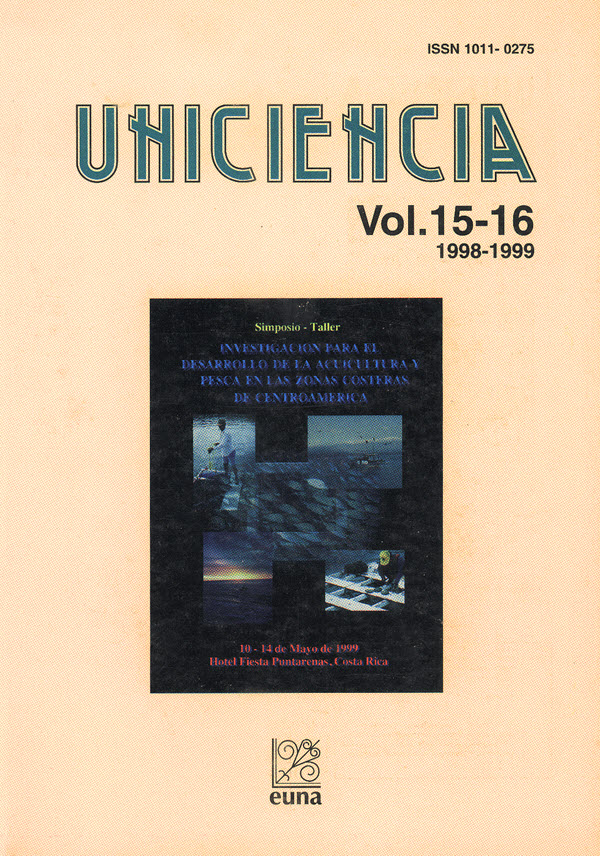Presencia de agroquímicos en ecosistemas acuáticos de zonas costeras y análisis preliminar del riesgo ambiental (ING)
Abstract
From 1992-1997 Costa Rica imported about 41 million kg of pesticide active ingredients. The total quantity imported in 1997 was 61% higher than the one imported in 1992. The kilograms of a.i. utilized per hectare of cultivated land also increased during the mentioned period. Seventeen a.i. composed 80% of the total quantity imported from 1995-1997. The most imported biocide groups during this period were the fungicides (47%), followed by the herbicides (26%), the insecticides/nematicides (16%) and the other groups including the fumigants (10%). In 1995 mayor crops in Costa Rica, both in extension and production included: banana, coffee, rice, vegetables, fruits, ornamental plants, roots, sugar cane, other grains and pastures. Almost every stage of these crops life cycle, utilizes pesticide, the results of this is an intensive and extensive use of agrochemical during the whole year. Agricultural activities taken place near coastal areas, influence freshwater and marine ecosystem with pesticide residues. Some reasons for this are: big extensions of land are dedicated to these crops; most of the crops are pesticide dependent; pesticide are normally applied near aquatic ecosystem and in some cases these ecosystem are directly exposed; most of the a.i. utilized are toxic to the aquatic fauna; the intense and frequent rainy periods characterizing some of the country regions plays an important role in the transference of these substances to the water bodies and the types of pesticide application, if aerial wind drift carry them to the coastal areas, if manual runoffs and erosion carry them through the river system into the estuarine and marine environment. The environmental impact of a substance does not depend only on the quantity imported, but also on its toxicity and on its environmental fate and behavior. Based on results of pesticide residues obtained in samples from the North Pacific and North Atlantic region of Costa Rica, a preliminary and simple index of acute toxicity and of chronic risk for those ecosystems was calculated. The importance and drawbacks of this kind of analyses is discussed and solutions to reduce the environmental impact of agrochemical in these regions are proposed.Downloads
Published
Issue
Section
License
Authors who publish with this journal agree to the following terms:
1. Authors guarantee the journal the right to be the first publication of the work as licensed under a Creative Commons Attribution License that allows others to share the work with an acknowledgment of the work's authorship and initial publication in this journal.
2. Authors can set separate additional agreements for non-exclusive distribution of the version of the work published in the journal (eg, place it in an institutional repository or publish it in a book), with an acknowledgment of its initial publication in this journal.
3. The authors have declared to hold all permissions to use the resources they provided in the paper (images, tables, among others) and assume full responsibility for damages to third parties.
4. The opinions expressed in the paper are the exclusive responsibility of the authors and do not necessarily represent the opinion of the editors or the Universidad Nacional.
Uniciencia Journal and all its productions are under Creative Commons Atribución-NoComercial-SinDerivadas 4.0 Unported.
There is neither fee for access nor Article Processing Charge (APC)






